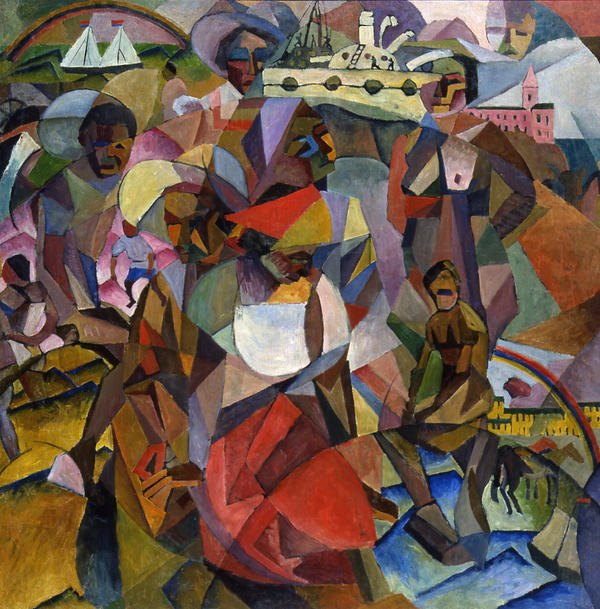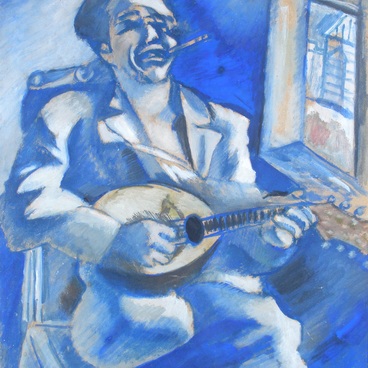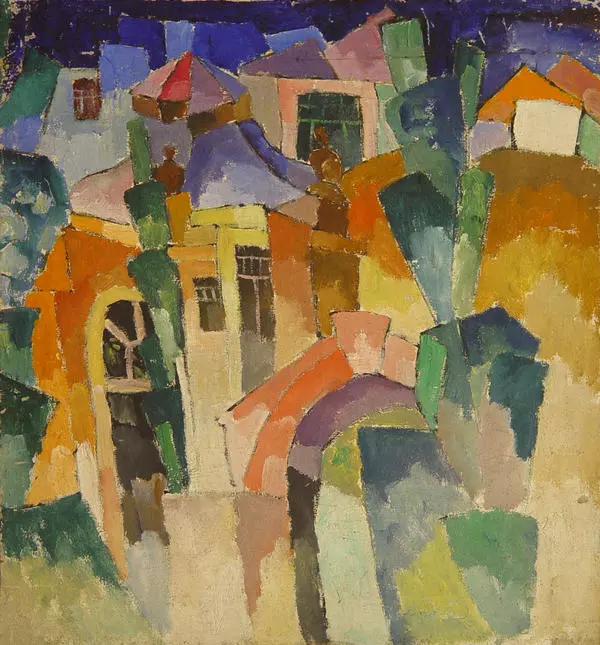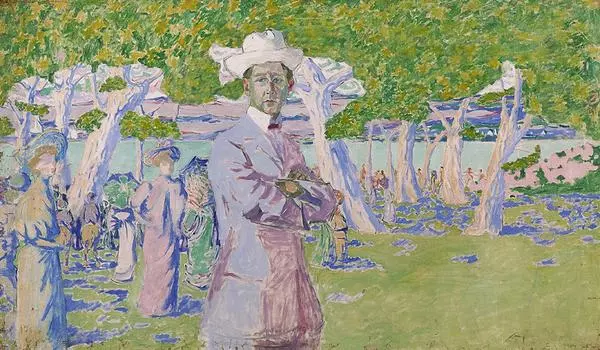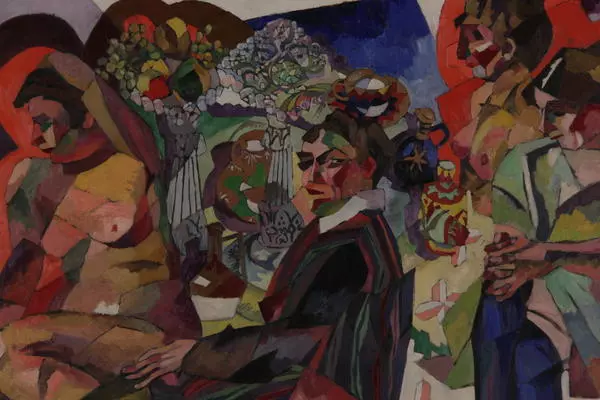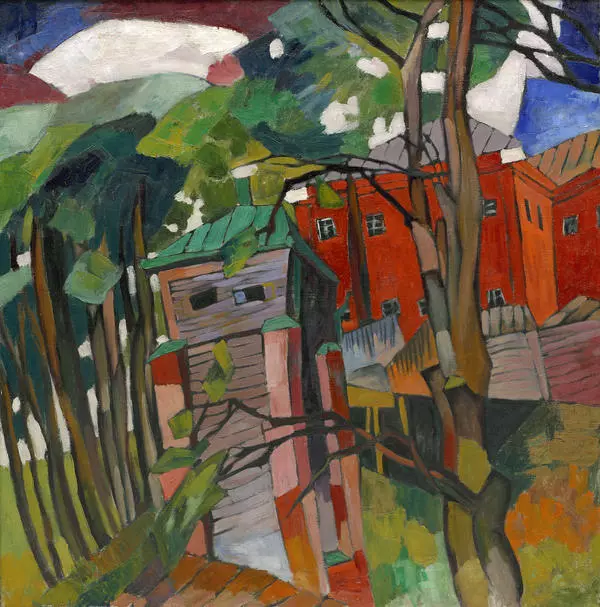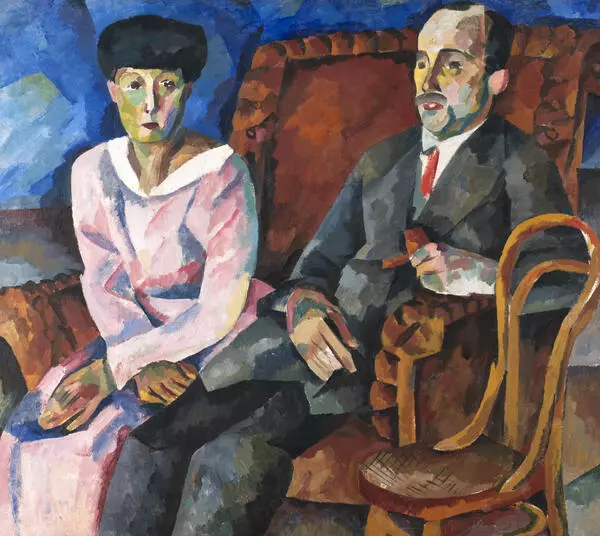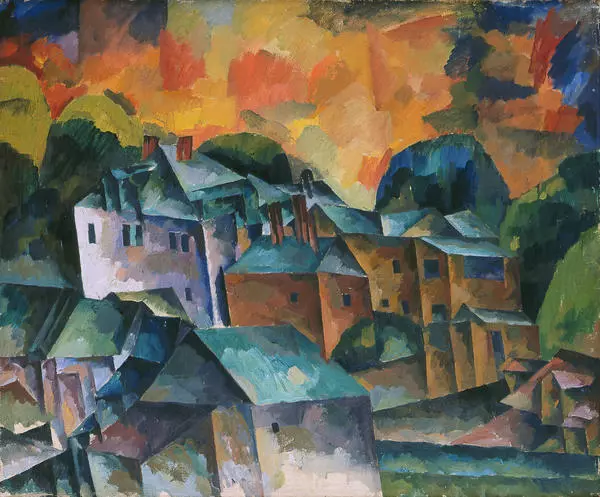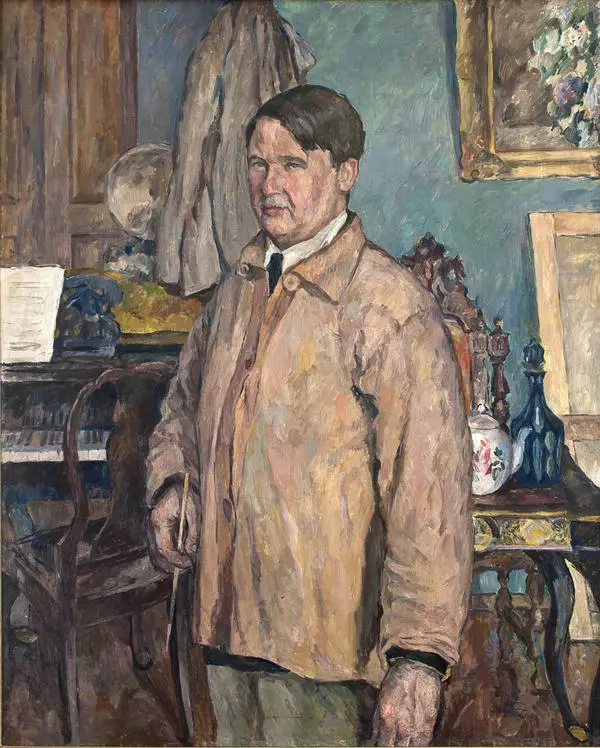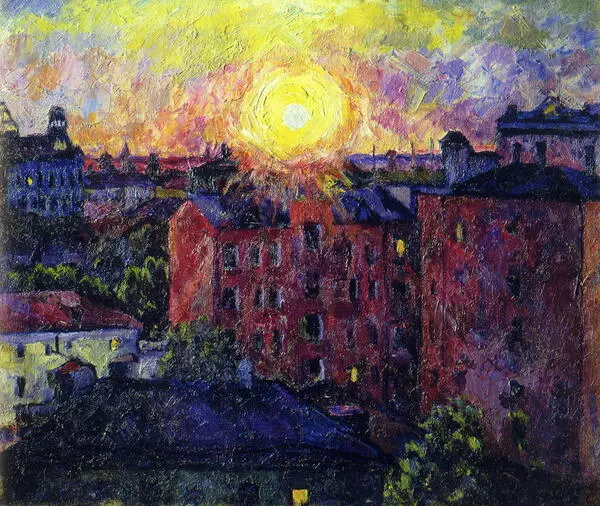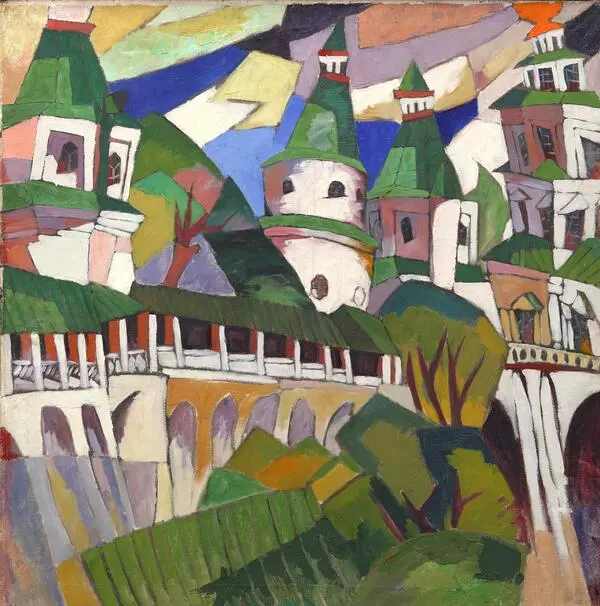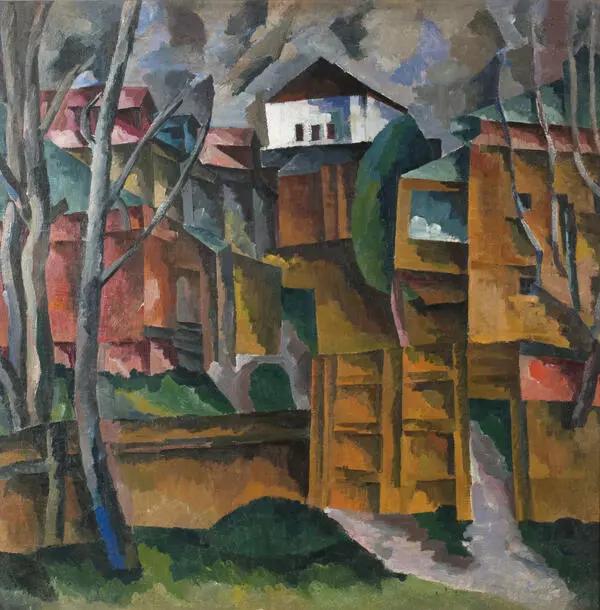Aristarkh Lentulov was the most daring experimenter in The Jack of Diamonds group of artists — the largest association of early avant-garde. Lentulov came to Saint Petersburg from Penza and entered the Academy of Arts, studio of Professor of Art Dmirty Kardovsky.
Afterwards, Aristarkh Lentulov studied in private French art school Académie de la Palette, popular among Russian artists. It was attended by Marc Chagall, Liubov Popova, Vera Mukhina, its students practiced cubism and futurism. In the Academy, Aristarkh Lentulov formed his own cubo-futuristic concept of a panel picture or kaleidoscope consisting of dynamic brush strokes, spots, thin lines of color.
Cubo-futurism is a phenomenon of Russian avant-garde in fine art and poetry, an alloy of French cubism and Italian futurism. Cubists attempted to ‘disintegrate’ an object into spherical, conic, or cylindrical forms, and futurists tried to convey movement using sharp angles, spirals, zigzags, and other dynamic figures.
It is believed that the word of ‘cubo-futurism’ was first used in the Russian literary criticism by Korney Chukovsky, and not at all in a complimentary manner at that.
Afterwards, Aristarkh Lentulov studied in private French art school Académie de la Palette, popular among Russian artists. It was attended by Marc Chagall, Liubov Popova, Vera Mukhina, its students practiced cubism and futurism. In the Academy, Aristarkh Lentulov formed his own cubo-futuristic concept of a panel picture or kaleidoscope consisting of dynamic brush strokes, spots, thin lines of color.
Cubo-futurism is a phenomenon of Russian avant-garde in fine art and poetry, an alloy of French cubism and Italian futurism. Cubists attempted to ‘disintegrate’ an object into spherical, conic, or cylindrical forms, and futurists tried to convey movement using sharp angles, spirals, zigzags, and other dynamic figures.
It is believed that the word of ‘cubo-futurism’ was first used in the Russian literary criticism by Korney Chukovsky, and not at all in a complimentary manner at that.

